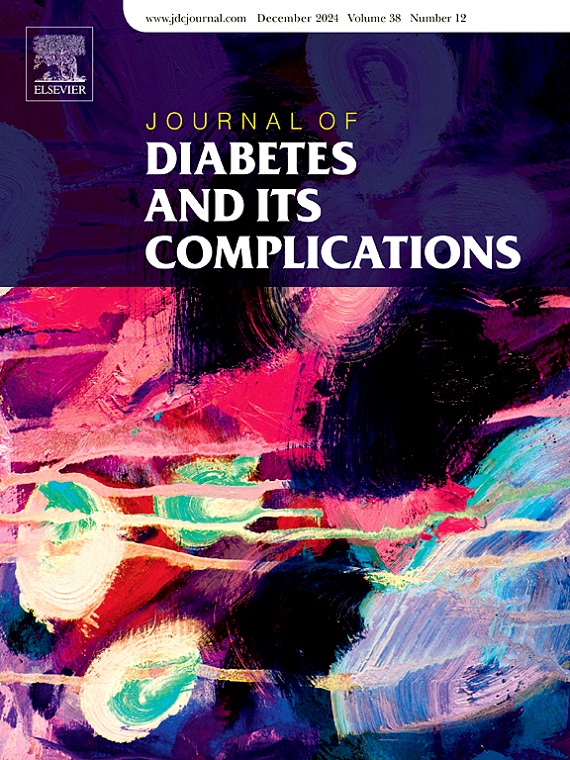Combination of imeglimin and resistance exercise improves mitochondrial function and glucose metabolism in skeletal muscles
IF 3.1
3区 医学
Q3 ENDOCRINOLOGY & METABOLISM
引用次数: 0
Abstract
The diabetes medication imeglimin, which operates through a novel mechanism of action and resistance training (RT), a significant exercise therapy, effectively enhances mitochondrial function in skeletal muscles and regulates blood glucose levels. However, the efficacy of the combination therapy remains unclear.
The combination of imeglimin and RT enhanced mitochondrial function, reduced inflammatory cytokine levels, and upregulated the expression of anti-inflammatory and antioxidant-related genes as determined by RT-PCR. Additionally, there was an increase in the protein expression of peroxisome proliferator-activated receptor gamma coactivator 1-α (PGC1-α), a crucial regulator of mitochondrial biogenesis and glucose metabolism. This was accompanied by elevated levels of sirtuins (Sirt) 1 and 3, which positively regulate PGC1-α activity, as well as an increase in nicotinamide adenine dinucleotide (NAD+) levels, which are involved in Sirt1 and Sirt3 activity. Furthermore, an increase in the phosphorylation rate of protein kinase B (Akt), which plays a role in insulin signaling, and upregulation of glucose transporter type 4 (GLUT4), which is involved in glucose uptake, were observed.
These findings suggest that the combination of imeglimin and RT is a promising therapeutic approach to enhance mitochondrial function and glucose metabolic capacity.
结合伊米霉素和抗阻运动改善骨骼肌线粒体功能和葡萄糖代谢
糖尿病药物伊米明通过一种新的作用机制和抗阻训练(RT),一种重要的运动疗法,有效地增强骨骼肌线粒体功能并调节血糖水平。然而,联合治疗的疗效尚不清楚。通过RT- pcr检测,伊米霉素和RT联合使用可增强线粒体功能,降低炎症细胞因子水平,上调抗炎和抗氧化相关基因的表达。此外,过氧化物酶体增殖物激活受体γ辅助激活因子1-α (PGC1-α)的蛋白表达增加,PGC1-α是线粒体生物发生和葡萄糖代谢的关键调节因子。这伴随着sirtuins (Sirt) 1和3水平的升高,sirtuins (Sirt) 1和3积极调节PGC1-α活性,以及烟酰胺腺嘌呤二核苷酸(NAD+)水平的增加,这与Sirt1和Sirt3活性有关。此外,研究还发现,参与胰岛素信号传导的蛋白激酶B (Akt)磷酸化率升高,参与葡萄糖摄取的葡萄糖转运蛋白4型(GLUT4)上调。这些发现表明,伊米霉素和RT联合使用是一种很有前景的治疗方法,可以增强线粒体功能和葡萄糖代谢能力。
本文章由计算机程序翻译,如有差异,请以英文原文为准。
求助全文
约1分钟内获得全文
求助全文
来源期刊

Journal of diabetes and its complications
医学-内分泌学与代谢
CiteScore
5.90
自引率
3.30%
发文量
153
审稿时长
16 days
期刊介绍:
Journal of Diabetes and Its Complications (JDC) is a journal for health care practitioners and researchers, that publishes original research about the pathogenesis, diagnosis and management of diabetes mellitus and its complications. JDC also publishes articles on physiological and molecular aspects of glucose homeostasis.
The primary purpose of JDC is to act as a source of information usable by diabetes practitioners and researchers to increase their knowledge about mechanisms of diabetes and complications development, and promote better management of people with diabetes who are at risk for those complications.
Manuscripts submitted to JDC can report any aspect of basic, translational or clinical research as well as epidemiology. Topics can range broadly from early prediabetes to late-stage complicated diabetes. Topics relevant to basic/translational reports include pancreatic islet dysfunction and insulin resistance, altered adipose tissue function in diabetes, altered neuronal control of glucose homeostasis and mechanisms of drug action. Topics relevant to diabetic complications include diabetic retinopathy, neuropathy and nephropathy; peripheral vascular disease and coronary heart disease; gastrointestinal disorders, renal failure and impotence; and hypertension and hyperlipidemia.
 求助内容:
求助内容: 应助结果提醒方式:
应助结果提醒方式:


